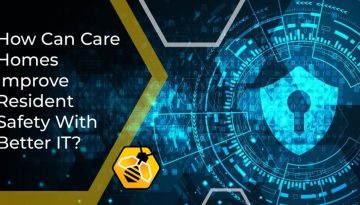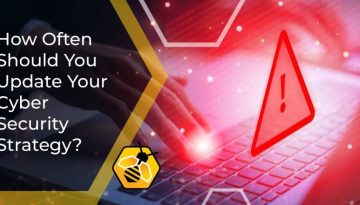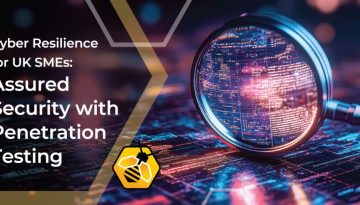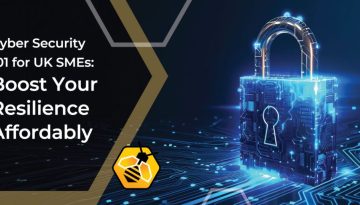How Can Care Homes Improve Resident Safety With Better IT?
Resident safety is the single most important responsibility within any care home. From medication administration and record-keeping to emergency communication and safeguarding, every part of care relies on accurate information, secure data systems and seamless connectivity.
Yet many care homes across the UK are operating with outdated IT setups, unsecured networks, slow internet speeds and manual processes that leave both residents and staff vulnerable. In this blog, we explore the key ways care homes can improve resident safety by strengthening their IT infrastructure, cybersecurity, telecoms and onsite connectivity.
Are your care systems secure enough to protect resident data?
Care homes hold some of the most sensitive personal data of any organisation: medical histories, medication schedules, behavioural notes, family contact details and more. This makes them a prime target for cyber criminals.
Yet according to industry research, many care providers still rely on outdated software, unsecured Wi-Fi networks and shared passwords.
Strengthening security doesn’t need to be complex. Key improvements (that could be made with IT support for healthcare specialists) include:
- Upgrading to Sophos firewalls or similar enterprise-grade protection
- Ensuring staff use individual login credentials
- Implementing multi-factor authentication (MFA)
- Keeping devices on regular patching schedules
- Encrypting data on all laptops, PCs and mobile devices
Achieving Cyber Essentials or Cyber Essentials Plus not only reduces risk but is increasingly viewed as a baseline requirement for suppliers, local authorities and NHS partnerships. Certification signals that a care home takes data protection seriously, which directly impacts resident safety.
How can better connectivity improve day-to-day care?
Slow or unreliable internet isn’t just inconvenient: it can lead to medication delays, communication issues and missed alerts from digital care systems.
Modern care homes now rely on connectivity for:
- Digital care plans
- Nurse call systems
- Medication management platforms
- Remote GP consultations
- CCTV security
- Smart sensors (fall detection, pressure mats, door alarms)
- Family communication portals
If Wi-Fi fails, these systems fail with it.
A strong foundation includes:
Leased lines for guaranteed uptime
Unlike standard broadband, leased lines provide dedicated bandwidth and symmetrical upload/download speeds, which are ideal for care homes with high-use digital systems.
Enterprise-grade Wi-Fi installations
No more dead zones in resident rooms, treatment rooms or communal spaces.
Network segmentation
Separating staff, resident and visitor networks reduces risk and keeps clinical applications running smoothly.
Connectivity should never be the weak point in a care environment. A modern, resilient network ensures vital systems work exactly when needed.
Could outdated hardware be putting residents at risk?
Many care homes still rely on slow computers, shared devices and unsupported operating systems, which is a dangerous mix.
Outdated hardware can lead to:
- Slow access to digital care plans
- System crashes during medication rounds
- Increased cyber vulnerabilities
- Staff workarounds such as paper notes or delayed updates
Replacing poorly performing devices with modern, secure hardware ensures:
- Faster access to resident records
- More reliable digital operations
- Better accuracy in medication and care documentation
- Fewer system outages during critical moments
This is particularly important as the sector moves towards full digitalisation by 2026, as encouraged by NHS Digital.
How can VoIP telecoms improve emergency response times?
VoIP phone systems are now essential in care homes, not just for communication, but for safeguarding.
A bespoke VoIP system can offer:
- Instant internal calling between staff
- Automatic call routing for emergency lines
- Integration with nurse call systems
- Call logging for accountability
- Remote access for managers on-call
- Failover options if internet goes down
For example, emergency calls can be set to ring multiple staff members simultaneously, reducing response times during incidents. Custom configurations also allow homes to tailor the system to their workflow, improving both safety and operational efficiency.
Are you prepared for the increasing cyber threats facing the healthcare sector?
The healthcare sector has seen a significant rise in targeted cyber attacks, including phishing, ransomware and supply chain breaches. Care homes often assume these attacks only happen to large NHS trusts, but cyber criminals increasingly target smaller providers with weaker defences.
Key questions to ask:
- Do staff recognise phishing emails?
- Is your firewall configured by a specialist?
- Are backups encrypted and stored off-site or in a UK data centre?
- Would you know what to do in the first 24 hours of a breach?
- Do you have cyber insurance, and does it meet your security obligations?
Modern care requires modern protection. Cyber support from a specialist MSP ensures you’re not left exposed.
Is your care home’s IT infrastructure helping or hindering resident safety?
Resident safety depends on accurate information, secure systems and reliable communication. Investing in stronger IT support, better cybersecurity, improved connectivity and modern hardware is a safeguarding priority.











